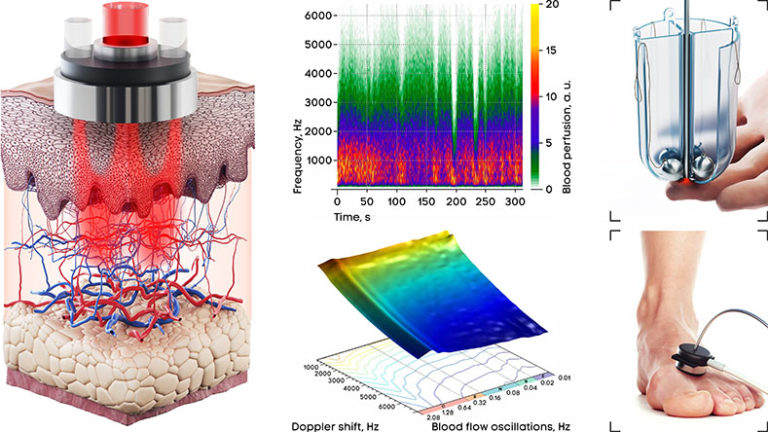The use of light in health care has been extended to a range of applications, including functional clinical diagnosis and monitoring of the progress of treatment. In this paper, we present a further development of laser Doppler flowmetry (LDF) – a coherent optical method for measuring blood-flow in the skin. When a group of photons oscillating at the same frequency and in phase with each other are scattered in moving blood, they accumulate information about the concentration and speed of red blood cells, and this information can be extracted. Analysing fluctuations in light intensity collected on the surface of the photodetector, we reconstruct the signal’s Doppler power spectrum and retrieve the parameters of the blood flow.
In the conventional LDF approach, the key measured parameters, index of microcirculation and perfusion rate, are proportional to an averaged concentration of red blood cells (RBC) and their average velocity within a diagnostic volume. These quantities compose mixed signals from different vascular beds, with a range of blood flow velocities. In the current paper, we introduce a new signal processing approach for the decomposition of LDF power spectra in terms of ranges of blood flow distribution by frequency series. The developed approach was validated in standard occlusion tests conducted on healthy volunteers, and applied to investigate the influence of local pressure rendered by a probe on the surface of the skin. Finally, in limited clinical trials, we demonstrate that the approach can significantly improve the diagnostic accuracy of detection of microvascular changes in the skin of the feet in patients with Diabetes Mellitus type 2, as well as age-specific changes. The results obtained show that the developed approach of LDF signal decomposition provides essential new information about blood flow and blood microcirculation and has great potential in the diagnosis of vascular complications associated with various diseases.

